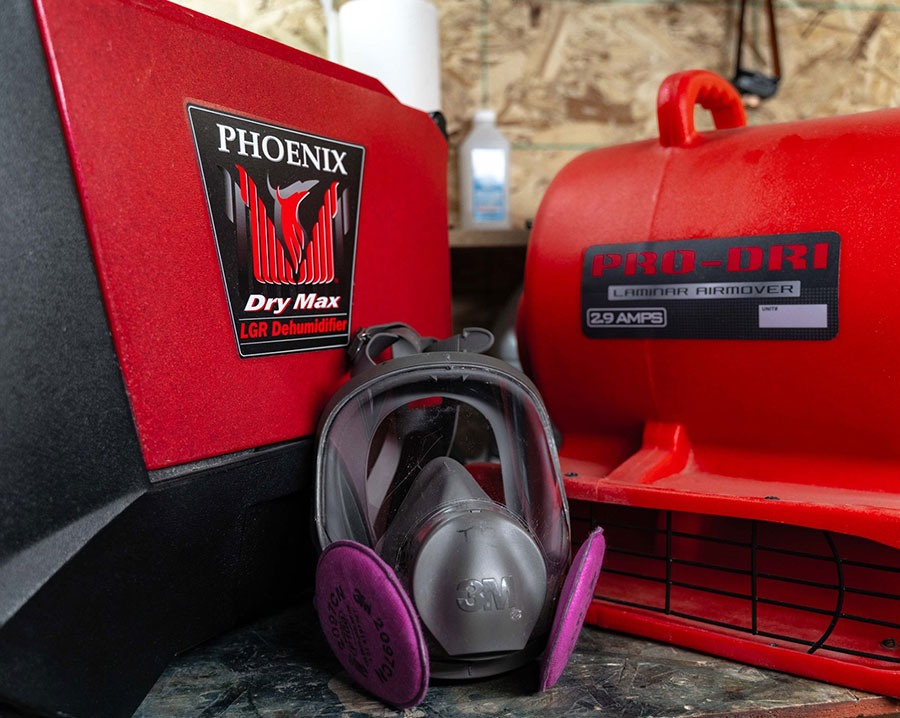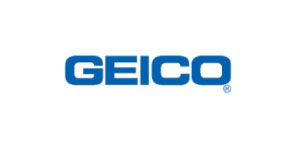When faced with a biohazard contamination, it’s crucial to address the situation promptly and effectively. But what exactly does biohazard clean up entail? Are there specific steps and processes involved in ensuring thorough decontamination and safe disposal? Let’s explore the intricacies of biohazard clean up and discover what it truly encompasses.
From removing hazardous materials to sanitizing affected areas, biohazard clean up is a meticulous process that requires expertise and adherence to safety protocols. It goes beyond simply cleaning up a mess—it involves protecting the health and well-being of both the cleanup crew and the general public.
So, how is contamination removed? What techniques are employed to ensure effective sanitization? And what measures are taken to ensure proper disposal in compliance with regulations? Join us as we delve into the world of biohazard clean up and unveil the essential components that contribute to its success.
Key Takeaways:
- Biohazard clean up involves the safe and thorough removal of hazardous materials.
- Contamination removal is a crucial part of biohazard clean up to eliminate the source of the hazard.
- Sanitization plays a vital role in biohazard clean up by disinfecting affected areas.
- Proper disposal is critical to complying with local, state, and federal regulations.
- Safety and compliance are of utmost importance in biohazard clean up.
The Importance of Professional Biohazard Remediation
When it comes to biohazard clean up, it is crucial to prioritize the safety and effectiveness of the remediation process. Hiring professionals who specialize in biohazard remediation ensures that the clean-up is carried out with the utmost care and adherence to industry standards.
Trained technicians with expertise in biohazard clean up are equipped with the knowledge and skills to handle hazardous materials safely. They understand the risks involved and take necessary precautions to minimize exposure and cross-contamination.
Professional companies also have access to specialized equipment and tools that are essential for thorough and efficient remediation. These advanced resources allow them to effectively remove the biohazards and ensure a clean and safe environment.
By hiring a professional biohazard remediation service, you can have peace of mind knowing that the clean-up is being conducted in compliance with regulations. Professionals follow strict protocols and guidelines to protect themselves and the occupants of the affected space.
Don’t take any chances with biohazard clean up. Trust the expertise of professionals who can provide you with a safe and effective remediation process.
Next, we will explore the initial assessment and safety protocols involved in biohazard clean up.
Initial Assessment and Safety Protocols
The initial assessment is a crucial step in biohazard clean up, where trained professionals evaluate the extent of the contamination and determine the appropriate course of action. This assessment allows them to gather essential information about the site and assess the potential risks involved.
Safety protocols are established and followed throughout the entire clean-up process to ensure the well-being of both the workers and the occupants of the affected space. This includes the implementation of thorough safety measures and the use of personal protective equipment (PPE), such as gloves, masks, and coveralls. The proper use of PPE minimizes the risk of exposure to hazardous materials and helps maintain a safe working environment.
A thorough evaluation is conducted to identify all potential hazards associated with the biohazard contamination. This evaluation includes not only the visible contamination but also the potential risks hidden beneath surfaces or in hard-to-reach areas. By conducting a comprehensive assessment, professionals can develop effective risk mitigation strategies and establish appropriate cleaning and decontamination protocols.
Professionals involved in biohazard clean up are trained to handle and dispose of biohazardous waste safely and in compliance with strict regulations and guidelines. They adhere to proper waste management procedures and ensure that all waste is packaged, transported, and disposed of according to local, state, and federal regulations. This ensures the proper containment and disposal of hazardous materials, minimizing the risk of further contamination or health hazards.
Specialized cleaning agents and techniques are used in biohazard clean up to ensure the thorough decontamination of affected areas. These cleaning agents are specifically formulated to effectively kill and remove harmful bacteria, viruses, and other pathogens. Alongside the use of advanced cleaning techniques, professionals employ specialized equipment to ensure the proper application and distribution of cleaning agents, enhancing the overall efficiency and effectiveness of the cleaning process.
By conducting an initial assessment and implementing strict safety protocols, professionals in the biohazard clean up industry ensure a thorough evaluation of the contamination, effective risk mitigation, and the use of personal protective equipment. This comprehensive approach promotes safety, minimizes exposure risks, and allows for the proper decontamination of affected areas, reducing the risk of future health hazards.
What is Included in Biohazard Clean Up?
Biohazard clean up encompasses several essential steps and processes that are necessary to effectively address and mitigate contamination risks. These steps are vital in ensuring the safety of individuals and the proper handling of hazardous materials.
Containment: The process of biohazard clean up typically begins with containment. This involves isolating the affected area to prevent the spread of contaminants. By implementing containment measures, professionals can minimize the risk of exposure and cross-contamination.
Decontamination: Decontamination is a crucial component of biohazard clean up. It involves the thorough removal and disposal of contaminated materials, surfaces, and objects to eliminate the source of the hazard. This step is essential in restoring the affected area to a safe and sanitary condition.
Cleaning and Disinfection: Thorough cleaning and disinfection are integral parts of the biohazard clean up process. Specialized products and techniques are used to ensure the complete eradication of all traces of biohazards. This step is vital in eliminating bacteria, viruses, and other harmful pathogens, reducing the risk of further contamination.
Waste Disposal: Proper waste disposal is a critical aspect of biohazard clean up. Professionals follow strict regulations and guidelines to safely package and dispose of biohazardous waste. This ensures compliance with environmental regulations and minimizes the risk of further contamination or harm.
Ongoing Monitoring and Testing: After the clean-up process is complete, professionals may conduct ongoing monitoring and testing to ensure the effectiveness of the clean-up and confirm the successful remediation of the area. This step provides an added level of assurance that the environment is safe for occupancy.
By following these essential steps and processes, biohazard clean up professionals can effectively address contamination risks, protect the health and safety of individuals, and restore affected areas to a safe and sanitary condition.
Advanced Cleaning and Odor Neutralization Techniques
When it comes to biohazard clean up, advanced cleaning techniques and odor neutralization are crucial for thorough remediation. Professionals employ specialized methods and products to ensure the complete removal of stubborn stains and contaminants. High-pressure washing and dry ice blasting are two effective techniques used to eliminate tough stains and sanitize surfaces. These advanced cleaning techniques penetrate deeply into porous materials, ensuring thorough and effective decontamination.
While removing visible stains and contaminants is essential, addressing the lingering odors left behind by biohazards is equally important. Odor neutralization utilizes specialized methods and products designed to eliminate unpleasant smells. By targeting and neutralizing odor-causing molecules, professionals can effectively eliminate lingering odors and restore a clean and fresh environment.
In addition to advanced cleaning techniques and odor elimination, the restoration of the affected environment is a critical part of the biohazard clean up process. This includes addressing any structural damage that may have occurred. Professionals may need to replace damaged materials or repair affected areas to restore the space to its pre-contamination state.
Specialized equipment plays a vital role in biohazard clean up, especially when it comes to air purification and deodorization. Professionals may utilize air scrubbers and ozone generators to purify the air by removing harmful particles and neutralizing odors. These specialized devices help ensure the air quality is restored to a safe and healthy level, minimizing the risk of any lingering contaminants.
As part of their service, biohazard clean up professionals can also provide recommendations for ongoing maintenance and prevention strategies to minimize the risk of future biohazardous incidents. These suggestions may include regular cleaning and disinfection protocols, proper waste management practices, or implementing safety measures to prevent potential biohazard exposures.
Conclusion
Biohazard clean up is a complex and specialized process that requires professional remediation to ensure safety, effectiveness, and compliance. Hiring trained technicians and professional companies for biohazard clean up provides peace of mind, knowing that the clean-up is being carried out in accordance with industry standards.
Thorough assessments, safety protocols, and advanced cleaning techniques are essential components of effective biohazard clean up. By addressing all aspects of biohazard remediation, including decontamination, disposal, and restoration, professionals can restore the environment and mitigate future health risks.
When it comes to biohazard clean up, safety should always be the top priority. Professionals have the knowledge, skills, and specialized equipment necessary to handle hazardous materials and ensure a thorough and effective clean-up. By relying on their expertise, individuals and organizations can have confidence in the safety and effectiveness of the remediation process.
FAQ
What is included in biohazard clean up?
Biohazard clean up includes the safe and thorough removal of hazardous materials, such as blood, bodily fluids, chemicals, and other biological substances. It involves contamination removal, sanitization, proper disposal, and ensuring safety and compliance.
Why is professional biohazard remediation important?
Professional biohazard remediation is important because trained technicians with specialized equipment can handle hazardous materials safely and effectively. Hiring professionals ensures compliance with industry standards and regulations, protecting the safety of both workers and occupants.
What is the initial assessment and safety protocols involved in biohazard clean up?
The initial assessment involves evaluating the extent of contamination and determining the appropriate course of action. Trained professionals follow safety protocols, including using personal protective equipment, conducting thorough evaluations, and implementing risk mitigation strategies.
What are the essential steps and processes in biohazard clean up?
Biohazard clean up involves containment, decontamination, cleaning, disinfection, and proper waste disposal. These steps ensure that the affected area is isolated, the source of the contamination is removed, and all traces of biohazards are eradicated.
What advanced cleaning and odor neutralization techniques are used in biohazard clean up?
Advanced techniques like high-pressure washing and dry ice blasting may be used for stubborn stains and contaminants. Specialized methods and products are used for odor neutralization. Restoration may involve repairing structural damage, and air purification is achieved with specialized equipment.
Why is professional biohazard clean up necessary?
Professional biohazard clean up ensures safety, effectiveness, and compliance. Trained technicians and professional companies follow industry standards, conduct thorough assessments, implement safety protocols, and use advanced cleaning techniques. This results in the complete remediation of the environment and minimizes future health risks.




















